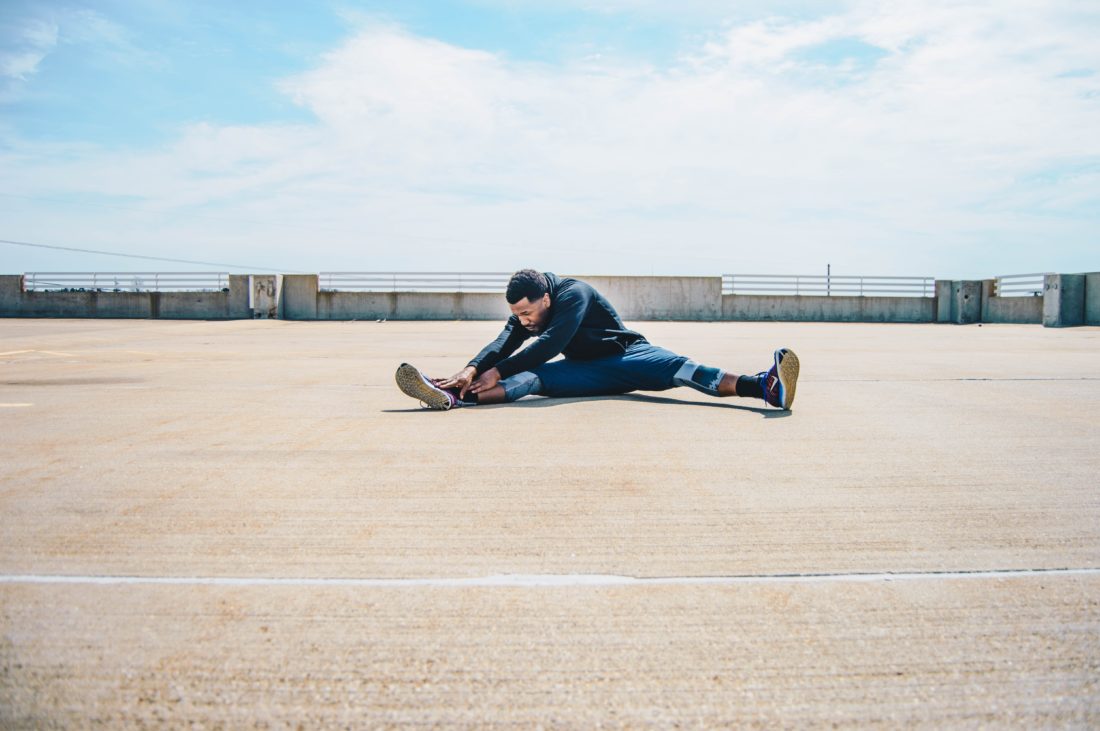
Stretching for Men
While many heath-minded men feel very comfortable completing cardio or strength training work outs, many men feel out of place or unsure of where to begin their stretching self-care practice. Maintaining flexibility is widely accepted as an important part of injury prevention particularly before and after physical activities as well as being fundamentally helpful in maintaining mobility throughout the aging process.
TYPES OF STRETCHING PRACTICES
Regardless of your experience level, be aware if you are stretching in a “heating” or “cooling” practice. Muscle tissue is very water dense, allowing it to be accessed quickly and through movement. Connective tissues are collagen rich, meaning that they are more like the texture of a fingernail than the texture of a muscle. In order for connective tissues to be released, they must be inactive and relaxed for minutes at a time.
“Yoga cultivates the ways of maintaining a balanced attitude in day-to-day life and endows skill in the performance of one’s actions.” —B.K.S. Iyengar
A heating practice, like Eccentrics of a Vinyasa Yoga class is focused on the stretching and release of the muscles. Classes like this will access stretching by building up the internal temperature of the body to allow the muscles to move more easily, and then engage in long holds of poses or active movement patterns. Be wary of “ballistic” stretching, in which one pushes oneself deeper into a pose repetitively. This is a potentially damaging practice that prioritizes working with force as opposed to meeting the body on it’s own terms and working precisely, intentionally and gently.
A cooling practice is focused on the release of connective tissues, such as the facias of the body. While your body may not get into the extreme physical expression of a stretch you are used to if you’re usual stretching practice is a heating technique, it is extremely beneficial especially in cases of long term postural misalignments, for instance: lordosis of the spine. Classes like Yin Yoga or Restorative Yoga are a great place to start learning how to soften the body into well supported poses that are to be sustained for minutes at a time.
COMMONLY PERCEIVED LIMITATIONS
Men typically have less mobility in their hips than their female counterparts in classes due to the bone structure of the male pelvis. This is particularly noticeable in external rotation, or a “hip opening stretch.” Supports such as blocks or blankets under the knees in a supine butterfly pose or sitting up on blocks in a forward folding straddle are great ways to attain otherwise uncomfortable alignment as you begin to deepen your practice and access your natural range of motion.
Common muscle imbalances for men include a slight hunch in the upper chest. A great passive, or cooling stretch to counteract this is to lay supine with your back over a gym ball, or with a yoga block underneath the shoulder blades, or even with a foam roller under the arm pits. As you lay back and relax for 3-5 minutes the connective tissues of the chest will gently release, perhaps allowing your chest to open as the shoulder girdle to come in to a more neutral and balanced position.
Some forward-folding poses for overweight populations may feel inaccessible. For standing forward folds, one possible modification for this is to make the stance of the legs wider. This allows more space for the torso of the body to hinge forward, intensifying the stretch. Seated forward folds may be aided by sitting up on a block to decrease the angle of flexion in the hips or to use propping in front of the body so the head can rest during extended cooling poses. Classes labeled as Gentle Yoga, Chair Yoga, or even Tai Chi can be great options for this population to begin bringing mindfulness and mobility into the joints as well as improving alignment.
STRETCHING YOUR MIND
Belief in yourself will make any work out or practice feel more attainable and keep you in a positive forward-focused mindset. While sometimes the mind will slip into an uncomfortable awareness of the physical sensation, or perhaps even current limitation being perceived as failure, often times it is at the point of mild discomfort is where the creation of more flexibility in the muscles is most likely happen.
“Asana [the physical practice of yoga] is a very important part of life. It keeps you healthy, strong, and energetic. And it enables you to discover and reclaim the innate wisdom of your body. But it is only after you rediscover the self-luminous nature of your own mind that you will begin to experience the true power of asana. That discovery comes from the meditative aspect of yoga.” —Rajmani Tigunait
If most of your workouts are high intensity, you may wish to try a cooling stretching practice. If much of your lifestyle is sedentary, consider trying a more active stretching practice. Oftentimes physical, emotional, and energetic balance is important in maintaining a state of wellness. If you are in search of flexibility you have never had before it is likely that you will have to embrace an approach or energetic disposition that is not your most intuitive state. There are many different stretching practices available today including various lineages of yoga, Eccentrics, and melt method classes. If one practice doesn’t resonate with you, stay open to the idea of improving you flexibility in a different practice or school of thought.
Be sure to tag @bsgdispatch in your gym and stretching selfies and share with us what your favorite stretching practice is.

